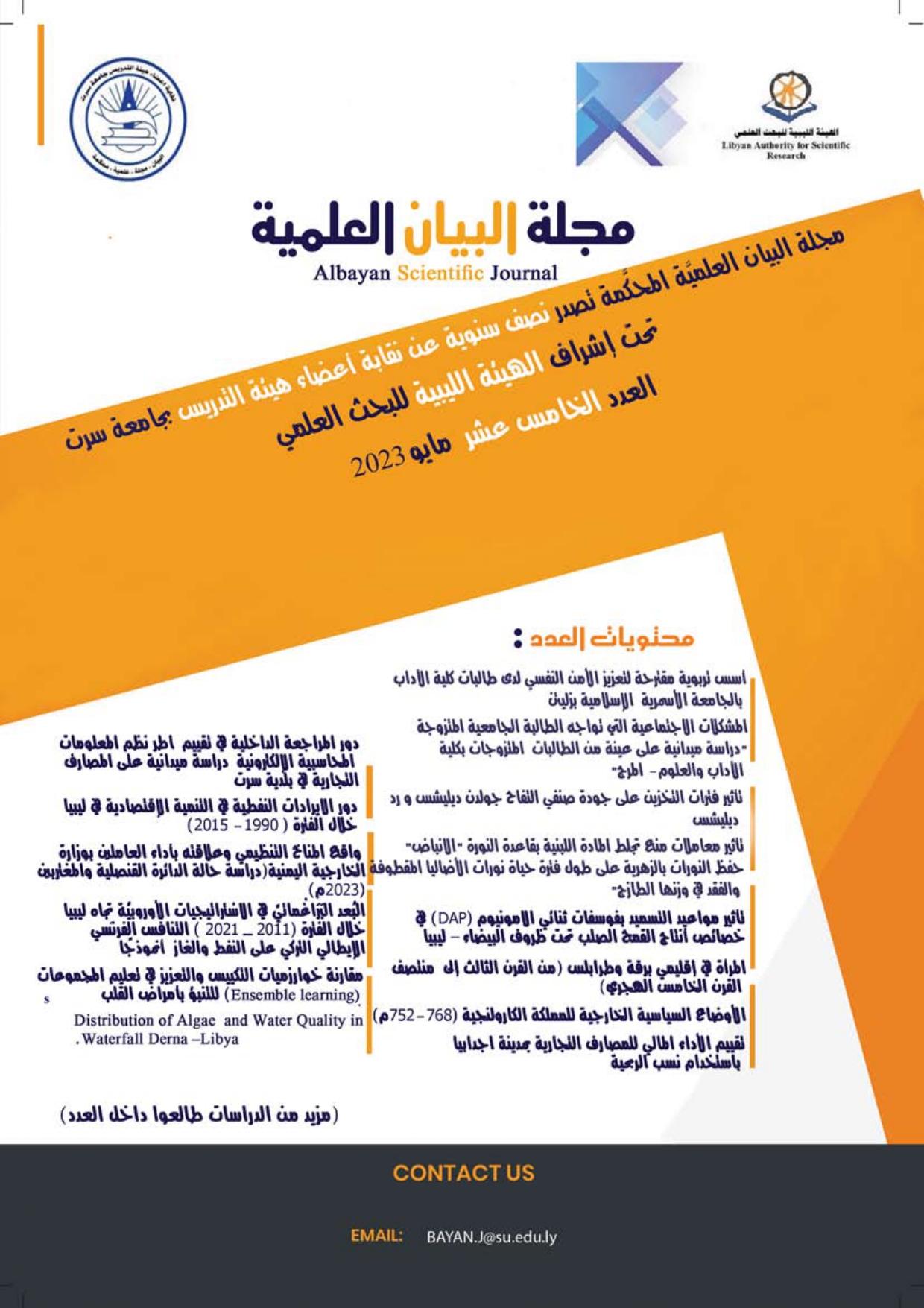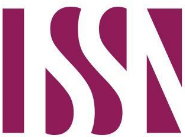The Influence of Free Time Reading Habit on the Writing Quality: Quasi-Experimental Study on Libyan Students in the English Department, Sirte University
DOI:
https://doi.org/10.37375/bsj.vi15.1809الكلمات المفتاحية:
Reading for pleasure، writing quality، control and experimental group، intervention courseالملخص
This study aimed to find out the extent to which the students' understudy reading for pleasure affect their overall writing quality. The design employed in this study was quasi-experimental. The data was collected through compositions in the pre and post-tests. The sample consisted of 14 students who were chosen randomly from the Department of English at Sirte University and they were equally ascribed to the Control Group and Experimental Group (CG & EG henceforth). The EG was exposed to treatment for two months whereas the CG students were not exposed to any treatment. The data were analyzed manually and using SPSS software (T-Test). The descriptive and statistical results revealed that the EG overall writing quality has been improved compared to the CG. The study concludes with some pedagogical recommendation and suggestions for further research.
المراجع
References:
Acheaw, M. & Larson, A. (2014). Reading habit among students and its effect on academic performance: A study of students of Koforidua Polytechnic.
Al- Mansour, N. & Al-Shorman, R. A. (2014). The Effect of an Extensive Reading Program on the Writing Performance of Saudi EFL University Students.
Atayeva, M. (2019). Impact of reading on students’ writing ability.
Bell, S. ( 2009). In International Encyclopedia of Human Geography, page 672-675
Brown, H.D. (2001). Teaching by Principles: An Interactive Approach to Language. Pedagogy 2nd Ed., Newyork: Pearson Education.
Bruner, J. (1996). The culture of education. Cambridge, MA: Harvard University Press.
Bull, L. (2017). Reading for Pleasure and Empathy: Making the Connection. YA Hotline, (105), 1-4.
Bus, A.G., van Ijzendorn, M.H. &Pellegrini, A.D. (1995). Joint book reading makes for success in learning to read: A meta-analysis on intergenerational transmission of literacy. Review of Educational Research, 65(1), 1-21.
Carson,J.G.(1993) . Reading for writing: Cognitive Perspectives .In J.G.Carson, &Leki (Eds ) ,Reading in the composition classroom :Second language Perspectives (85-104).Boston ,MA :Heinle&Heinle Publishers.
Clark, C. &Rumbold, K. (2006). Reading for Pleasure a research overview. The National Literacy Trust.
Cunningham, A. E. &Stanovich, K. E. (1998). What reading does for the mind. American Educator, 22(1&2), 8-15.
De Ford, D.E. (1986).Classroom contexts for literacy learning .In T.E. Raphael (ed.) The contexts of school-based literacy .New York: Random House
Goodman,K.(1986). What's whole in whole language ?Portsmouth,NH:Heinemann.
Grabe,W.(2001). Reading -writing relations: Theoretical perspectives and instructional practices .In D.Belcher&A.Hirvela (Eds. ),Linking literacies: Perspectives on L2reading /writing connections ( 15-47).Ann Arbor,MI: University of Michigan Press .
Graham, S. and Hebert, M.A.(2010). Writing to Read: Evidence for how writing can improve reading. A Carnegie Corporation Time to Act Report. Washington, DC: Alliance for Excellent Education.
Habibi,H.&Salleh ,A.andSarjit M.(2015). Impacts of The Extensive Reading Text on The Writing Performance of Iranian EFL Pre-university Students.
Hao,X.,&Sivell,J.(2002 ). Integrating reading and writing in EFL composition in China. Paper presented at the annual meeting of the Canadian association of applied linguistics, Humanities and Social Sciences, Congress, Toronto.
Harl, A. (2013). A historical and theoretical review of the literature: Reading and writing connections. In: A. Horning and E. Kraemer, ed., Reconnecting reading and writing. United Stated of America: Parlor Press LLC and The WAC Clearinghouse.
Hinkel,E., (2002b) . Grammar teaching in writing classes ;tense and cohesion . In E. Hinkel& S. Fotos, New perspectives on grammar teaching and learning .eds . Cambridge; Cambridge University Press.
Hirvela, A. (2004).Connecting reading and writing in second language writing instruction .Ann Arbor: The University of Michigan Press.
Holden, J. (2004). Creative Reading. London: Demos.
Hyland, K. (2003). Second Language Writing. New York: Cambridge University Press.
Jeremy,H. (2004). How to Teach Writing. London: Pearson Education Limited.
Krashen, S.D. (1984). Writing: Research, Theory, and Applications. Oxford: Pergamon.
Krashen, S. (2016). Compelling reading and problem-solving: The easy way (and the only way) to high levels of language, literacy, and life competence.
Kucer,S. (1985) .The making of meaning :Reading and writing as parallel processes. University of Southern California .Written Communication, 2, 317-336.
Li, Z. (2015). Connecting Reading and Writing: A Case Study. English Language Teaching.
Linuwih E.R. &Winardi Y.K, (2020). The influence of reading habits on students' writing skills. Anglo-Saxon: JurnalIlmiah Program StudiPendidikanBahasaInggris 11 (1), 37-47
Loewen, S. &Plonsky, L. (20l6). An A-L of applied linguistics research methods. London: Palgrave Macmillan.
Mahyar, U. S. (2012). The influence of reading habit on students’ writing skill. Bachelor’s skripsi, STIKIP Siliwangi, Bandung.
Meek, M. (1991). On Being Literate, London: Bodley Head.
Newman,J.(1985).Whole Language :Theory in use .Port mouth ,NH: Heinemann.
OECD, (2000): PISA Programme for International Student Assessment.
Powell, S. (2014). Building Communities of Engaged Readers: Reading for pleasure. Routledg.
Ramadan, M., (2019) . The Effectiveness of Teaching Grammar in Context: TeachingConjunctions as an Example .
Salehi, H., Asgari, M &Amini M.(2015). The impact of extensive reading on the writing performance of Iranian EFL pre-university students.
Stotsky,S .(1984)."Research on Reading /Writing Relationships: A Synthesis and Suggested Directions. "Composing and Comprehending .Ed.J.Jensen.Urbana,IL: ERIC Clearinghouse on Reading and Communication Skills and NCRE,7-22 .
Taha, A. (2021). Reading Habits among Students and Their Effect on their Academic Performance: A Study of Students of a Public School in Al Ain City in the UAE.
Twist, L., Schagan, and Hogson, C. (2007). Progress in International Reading Literacy Study (PIRLS): Reader and Reading National Report for England 2006. NFER and DCS.
Weaver, C., (1996). Teaching grammar in context. Portsmouth. NH: Heinemann.
Wilhelm, J. (2016). ‘Recognising the power of pleasure: What engaged adolescent readers get from their free-choice reading, and how teachers can leverage this for all’ Australian Journal of Language and Literacy 39(1), 30-41.
Wulandari, R. (2016). The correlation between students’ reading habit and students’ reading comprehension ability in the first grade of SMP PGRI GunungPelindung. Bachelor’s thesis, Lampung University, Bandar Lampung.
Zainal, Z. &Husin, S.H.B.M. (2011). A study on the impact of Reading on the Writing performance of Civil Engineering students.
Zambel, V. (1992). Writing ne'sway into reading. TESOL Quarterly, 26(3). 463-485.














